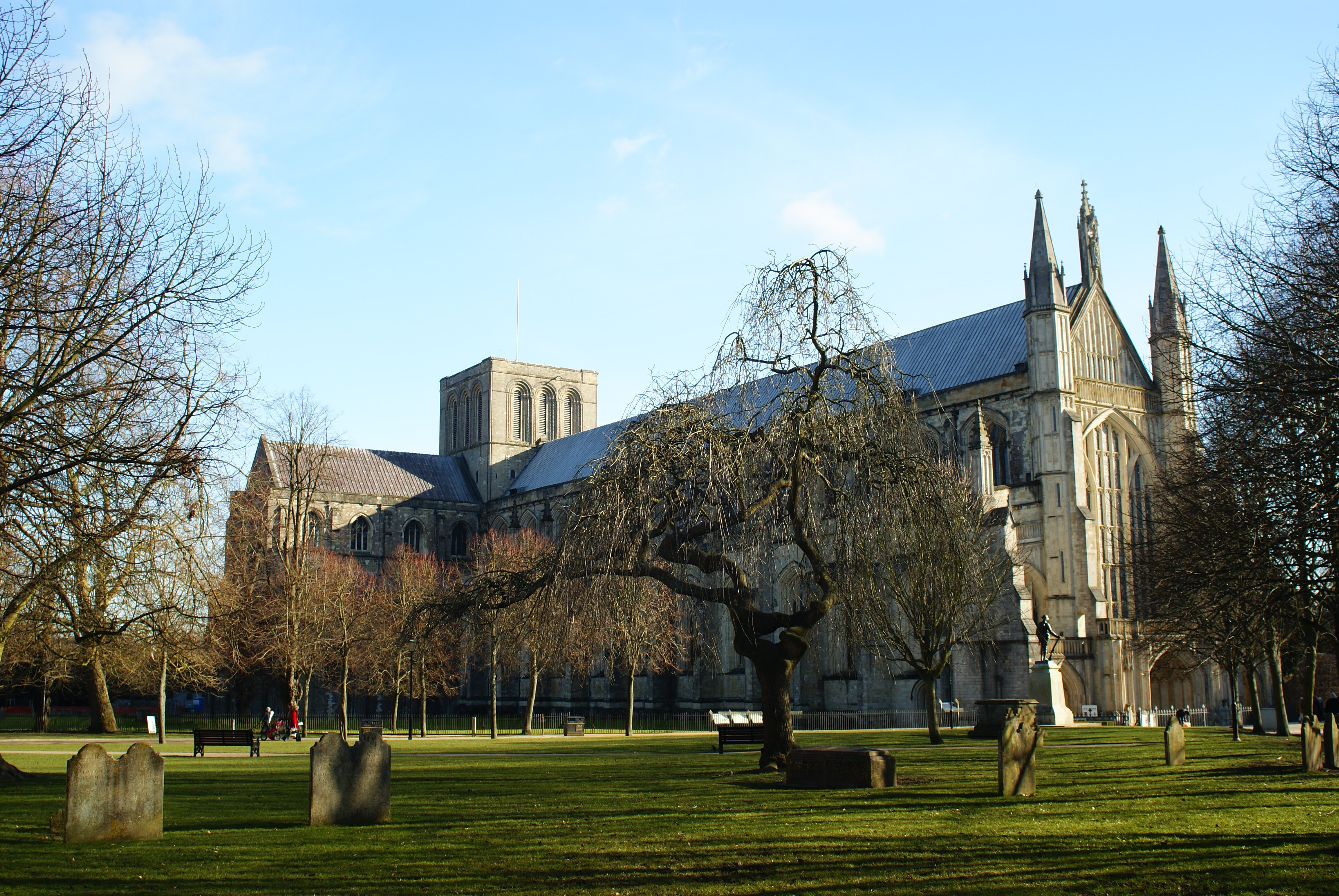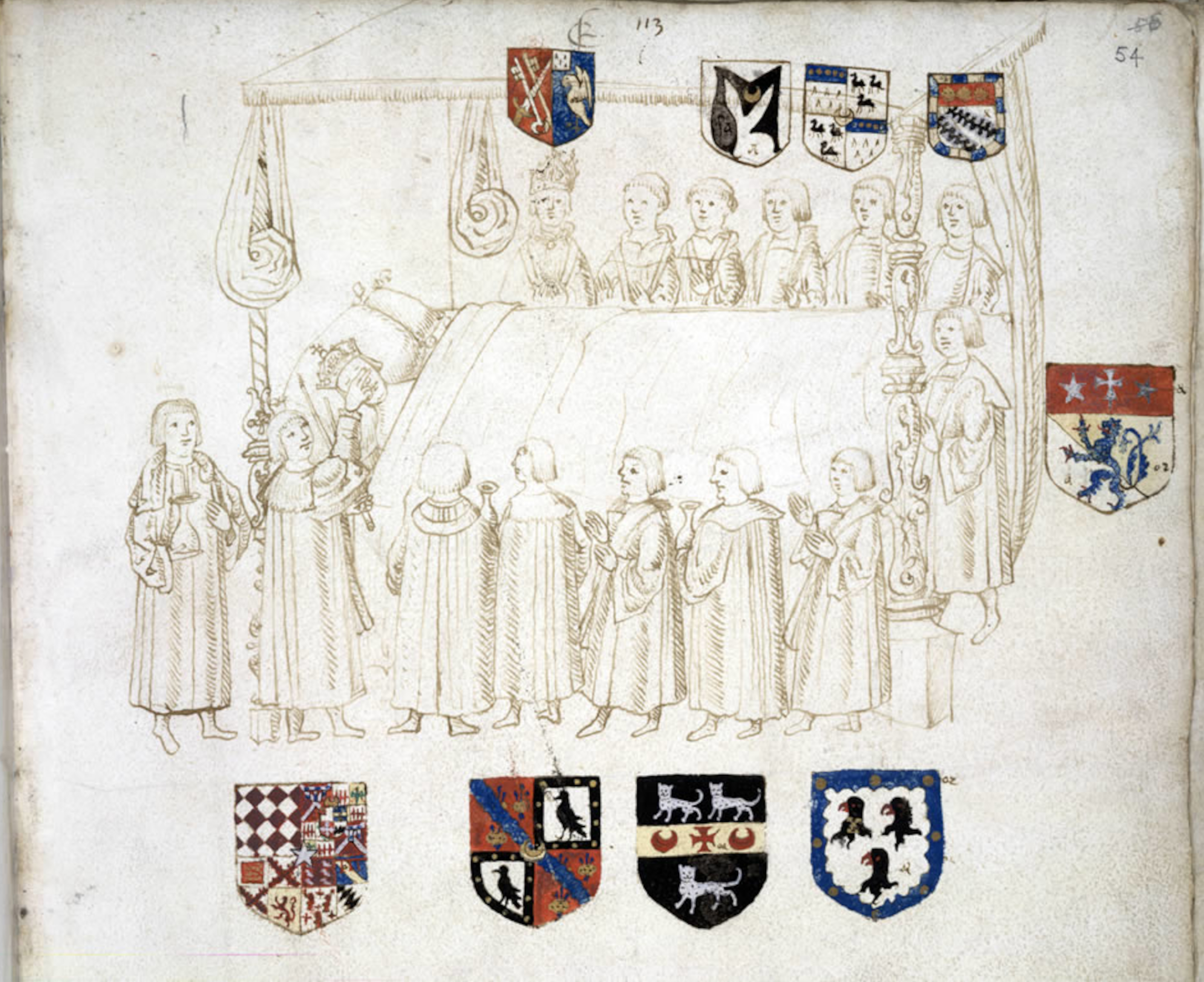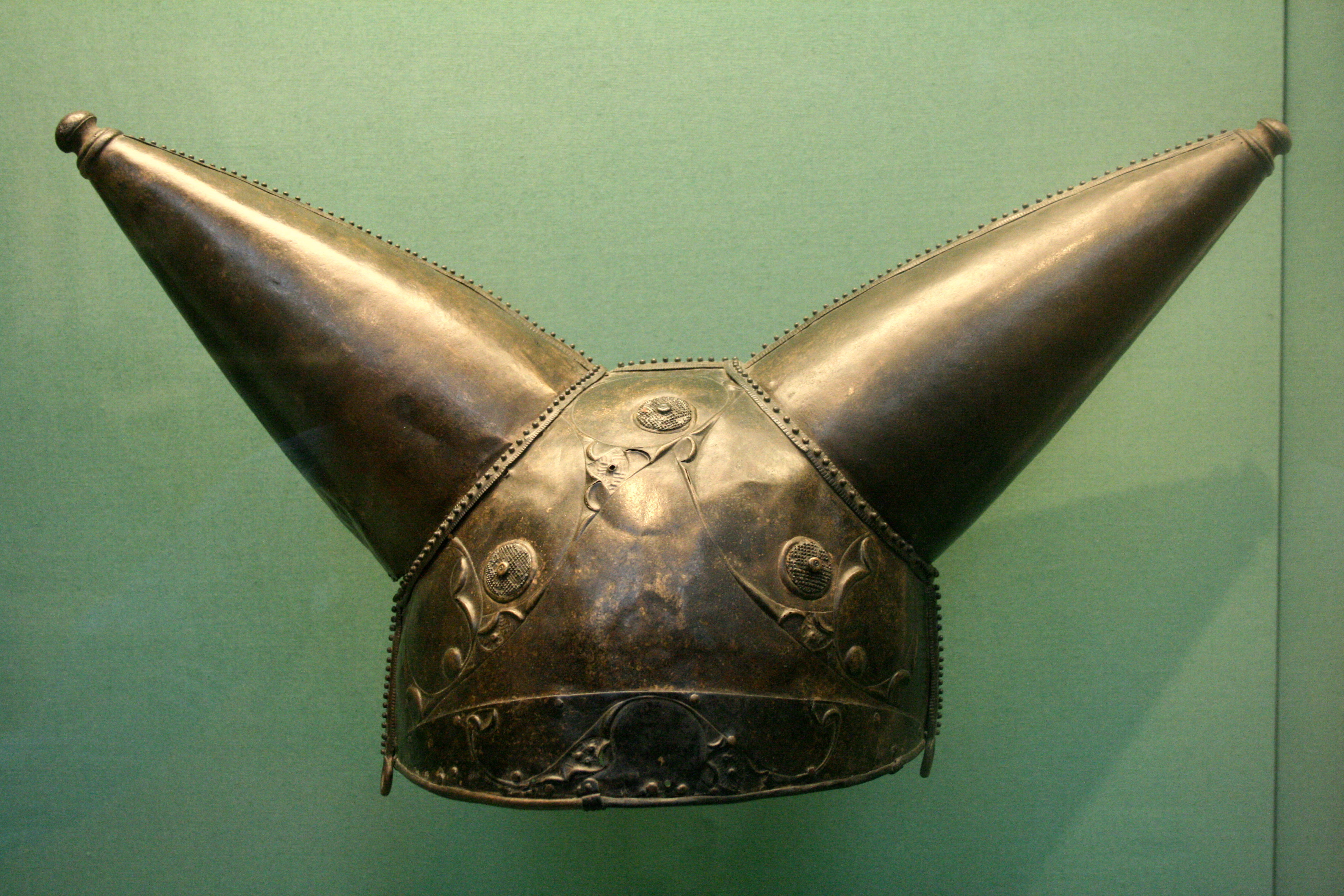|
William Paget, 1st Baron Paget
William Paget, 1st Baron Paget of Beaudesert (15069 June 1563), was an English statesman and accountant who held prominent positions in the service of Henry VIII, Edward VI and Mary I. He was the patriarch of the Paget family, whose descendants were created Earl of Uxbridge (1714) and Marquess of Anglesey (1815). Early life and education William Paget was born around 1506 in humble circumstances, but little is confirmed about his origin. A family named Paget was recorded as nail makers in Wednesbury, Staffordshire, during the Tudor period. His father has been variously described as a sheep shearer, barber, clothworker, constable, or nail smithy. According to Sir William Dugdale, he was the son of John Pachett or Paget, one of the serjeants-at-mace of the city of London. According to Staffordshire historian Frederick Hackwood, he was born in Wednesbury and taken to London by his father when he was very young. Paget must have been extremely bright, as he was accepted as ... [...More Info...] [...Related Items...] OR: [Wikipedia] [Google] [Baidu] |
Wednesbury
Wednesbury ( ) is a market town in the Sandwell district, in the county of the West Midlands (county), West Midlands, England; it was historically in Staffordshire. It is located near the source of the River Tame, West Midlands, River Tame and is part of the Black Country. Wednesbury is situated 5 miles (8km) south-east of Wolverhampton, 3 miles (4.4km) south-west of Walsall and 7 miles (11.8km) north-west of Birmingham. At the United Kingdom 2021 Census, 2021 Census, the town's built-up area had a population of 20,313. History Medieval and earlier The substantial remains of a large ditch excavated in St Mary's Road in 2008, following the contours of the hill and predating the Early Medieval period, has been interpreted as part of a hilltop enclosure and possibly the Iron Age hillfort long suspected on the site. The first authenticated spelling of the name was Wodensbyri, written in an endorsement on the back of the copy of the will of Wulfric Spot, dated 1004. Wednesbury (" ... [...More Info...] [...Related Items...] OR: [Wikipedia] [Google] [Baidu] |
Earl Of Uxbridge
Earl () is a rank of the nobility in the United Kingdom. In modern Britain, an earl is a member of the Peerages in the United Kingdom, peerage, ranking below a marquess and above a viscount. A feminine form of ''earl'' never developed; instead, ''countess'' is used. The title originates in the Old English word , meaning "a man of noble birth or rank". The word is cognate with the Old Norse, Scandinavian form ''jarl''. After the Norman Conquest, it became the equivalent of the continental count. In Scotland, it assimilated the concept of mormaer. Since the 1960s, earldoms have typically been created only for members of the British royal family, royal family. The last non-royal earldom, Earl of Stockton, was created in 1984 for Harold Macmillan, prime minister from 1957 to 1963. Alternative names for the rank equivalent to "earl" or "count" in the nobility structure are used in other countries, such as the ''hakushaku'' (伯爵) of the post-restoration Japanese Imperial era. Et ... [...More Info...] [...Related Items...] OR: [Wikipedia] [Google] [Baidu] |
Stephen Gardiner
Stephen Gardiner (27 July 1483 – 12 November 1555) was an English Catholic bishop and politician during the English Reformation period who served as Lord Chancellor during the reign of Queen Mary I. Early life Gardiner was born in Bury St Edmunds, but the date of his birth is uncertain. His father could have been a John Gardiner, but also could have been Wyllyam Gardiner, a substantial cloth merchant of the town where he was born, who took care to give him a good education. His mother was said to be Helen Tudor, an illegitimate daughter of Jasper Tudor, 1st Duke of Bedford, but American research from 2011 suggests that this lady was the mother of a different cleric, Thomas Gardiner. In 1511 Gardiner, aged 28, met Erasmus in Paris. He had probably already begun his studies at Trinity Hall, Cambridge, where he distinguished himself in the classics, especially in Greek. He then devoted himself to canon and civil law, in which subjects he attained so great a proficiency tha ... [...More Info...] [...Related Items...] OR: [Wikipedia] [Google] [Baidu] |
Anthony Denny
Sir Anthony Denny (16 January 1501 – 10 September 1549) was Groom of the Stool to King Henry VIII of England, thus his closest courtier and confidant. In 1539 he was appointed a gentleman of the privy chamber and was its most prominent member in King Henry's last years, having together with his brother-in-law, John Gates, charge of the "dry stamp" of the King's signature, and attended the King on his deathbed. He was a member of the Reformist circle that offset the conservative religious influence of Bishop Gardiner. He was a wealthy man, having acquired several manors and former religious sites distributed by the Court of Augmentations after the Dissolution of the Monasteries. Life Anthony Denny was the second son of Sir Edmund Denny (d. 22 December 1520), a Baron of the Exchequer, by his second wife, Mary Troutbeck, the daughter and coheir of Robert Troutbeck of Bridge Trafford in Cheshire. He had an elder brother, Sir Thomas Denny, of Bury St Edmunds, Suffolk, w ... [...More Info...] [...Related Items...] OR: [Wikipedia] [Google] [Baidu] |
Thomas Wriothesley
Sir Thomas Wriothesley ( ; died 24 November 1534) was a long serving officer of arms at the College of Arms in London. He was the son of Garter King of Arms, John Writhe, and he succeeded his father in this office. Personal life Wriothesley was born at Colatford, Wiltshire. His name at birth was Thomas Writhe, and he was the eldest son and second of four children of John Writhe and his first wife, Barbara, daughter of John Castlecombe. The location of Colatford has not been identified, but it was either near Castle Combe or Cricklade. Wriothesley's first wife, whom he married before 1500, was Jane, daughter of William Hall of Salisbury. The pair had ten children together, though their only surviving son was Charles Wriothesley, Windsor Herald of Arms in Ordinary. His second wife was Anne, widow of Robert Warcop with whom he had a daughter who died in infancy. Wriothesley died "worn out with age" in London, on 24 November 1534, and was presumably buried with his family in ... [...More Info...] [...Related Items...] OR: [Wikipedia] [Google] [Baidu] |
John Leland (antiquary)
John Leland or Leyland (13 September, – 18 April 1552) was an English poet and antiquary.Carley (2006), "Leland, John (''ca''. 1503–1552)" Leland has been described as "the father of English local history and bibliography". His ''Itinerary'' provided a unique source of observations and raw materials for many subsequent antiquaries, and introduced the county as the basic unit for studying the local history of England, an idea that has been influential ever since. Early life and education Most evidence for Leland's life and career comes from his own writings, especially his poetry. He was born in London on 13 September, most probably in about 1503, and had an older brother, also named John. Having lost both his parents at an early age, he and his brother were raised by Thomas Myles. Leland was educated at St Paul's School, London, under its first headmaster, William Lily. It was here that he already met some of his future benefactors, notably William Paget. Leland ... [...More Info...] [...Related Items...] OR: [Wikipedia] [Google] [Baidu] |
William Lilye
William Lily (or William Lilly or Lilye; c. 146825 February 1522) was an English classical grammarian and scholar. He was an author of the most widely used Latin grammar textbook in England and was the first high master of St Paul's School, London. Life Lily was born c. 1468 at Odiham, Hampshire, and he entered the University of Oxford in 1486. After graduating in arts he went on a pilgrimage to Jerusalem. On his return journey he put in at Rhodes, which was still occupied by the knights of St John, under whose protection many Greeks had taken refuge after the capture of Constantinople by the Turks. He then went on to Italy, where he attended the lectures of Angelus Sabinus, Sulpitius Verulanus and Pomponius Laetus at Rome, and of Egnatius at Venice. After his return he settled in London—where he became friends with Thomas More—as a private teacher of grammar, and is believed to have been the first who taught Greek in that city. In 1510 John Colet, dean of St Paul ... [...More Info...] [...Related Items...] OR: [Wikipedia] [Google] [Baidu] |
Frederick Hackwood
Frederick William Hackwood FRHS (18 April 1851 – 4 December 1926) was an English teacher, antiquarian, journalist, and prolific non-fiction writer who produced more than 30 books. He was born in Wednesbury, West Midlands and served that town as a justice of the peace, historian, and councillor. He wrote for the '' Wednesbury Herald'' for twenty years. Early life Frederick Hackwood was born on 18 April 1851 at 69 High Street East, Wednesbury, to Enoch and Sarah Hackwood. His father was a tailor and the family had moved to Wednesbury from Stoke-on-Trent in the mid-18th century. The family's origins in Staffordshire were said in Hackwood's obituary to date back to the 13th-century. An ancestor, William Hackwood, worked with John Flaxman in producing designs for Josiah Wedgwood."A Wednesbury Historian: Death of Mr F. W. Hackwood", ''Midland Advertiser'', 1926. Reproduced at Losing my Fred. Retrieved 31 January 2019. In 1868, Hackwood gained admission to St. Peter's Teachers ... [...More Info...] [...Related Items...] OR: [Wikipedia] [Google] [Baidu] |
City Of London
The City of London, also known as ''the City'', is a Ceremonial counties of England, ceremonial county and Districts of England, local government district with City status in the United Kingdom, city status in England. It is the Old town, historic centre of London, though it forms only a small part of the larger Greater London metropolis. The City of London had a population of 8,583 at the 2021 United Kingdom census, 2021 census, however over 500,000 people were employed in the area as of 2019. It has an area of , the source of the nickname ''the Square Mile''. The City is a unique local authority area governed by the City of London Corporation, which is led by the Lord Mayor of London, Lord Mayor of the City of London. Together with Canary Wharf and the West End of London, West End, the City of London forms the primary central business district of London, which is one of the leading financial centres of the world. The Bank of England and the London Stock Exchange are both ba ... [...More Info...] [...Related Items...] OR: [Wikipedia] [Google] [Baidu] |
William Dugdale
Sir William Dugdale (12 September 1605 – 10 February 1686) was an English antiquary and herald. As a scholar he was influential in the development of medieval history as an academic subject. Life Dugdale was born at Shustoke, near Coleshill in Warwickshire, where his father, John Dugdale, was steward to the local landowner. As he was born, a swarm of bees flew into the garden, which some considered "a happy presage on the life of the babe". He was educated at King Henry VIII School, Coventry. In 1623, he married Margaret Huntbach (1607–81), with whom he had nineteen children. In 1625, the year after his father's death, he purchased the manor of Blyth, near Shustoke. During an enclosure dispute with a neighbour a few years later he met the Leicestershire antiquary William Burton, who acted as arbitrator. He became involved in transcribing documents and collecting church notes and met other Midlands antiquaries such as Sir Simon Archer (1581–1662) and Sir Thomas H ... [...More Info...] [...Related Items...] OR: [Wikipedia] [Google] [Baidu] |
Pen And Sword
Pen and Sword Books, also stylised as Pen & Sword, is a British publisher which specialises in printing and distributing books in both hardback and softback on military history, militaria and other niche subjects, primarily focused on the United Kingdom. Pen and Sword has over 6,000 titles available in print, and also available as ebook download. Releasing 500 new titles each year on a variety of subjects, it is part of the '' Barnsley Chronicle'' newspaper group. History The first books produced by the company were in response to public demand, following a series of articles first published weekly in the '' Barnsley Chronicle''. ''Dark Peak Aircraft Wrecks'' told the story of crash sites in the Dark Peak area of the Peak District National Park, and a further weekly feature on the history of two Kitchener battalions, known as the Barnsley Pals, aroused a public interest. Over the years these books have been reprinted a number of times. Following on from the success of t ... [...More Info...] [...Related Items...] OR: [Wikipedia] [Google] [Baidu] |





